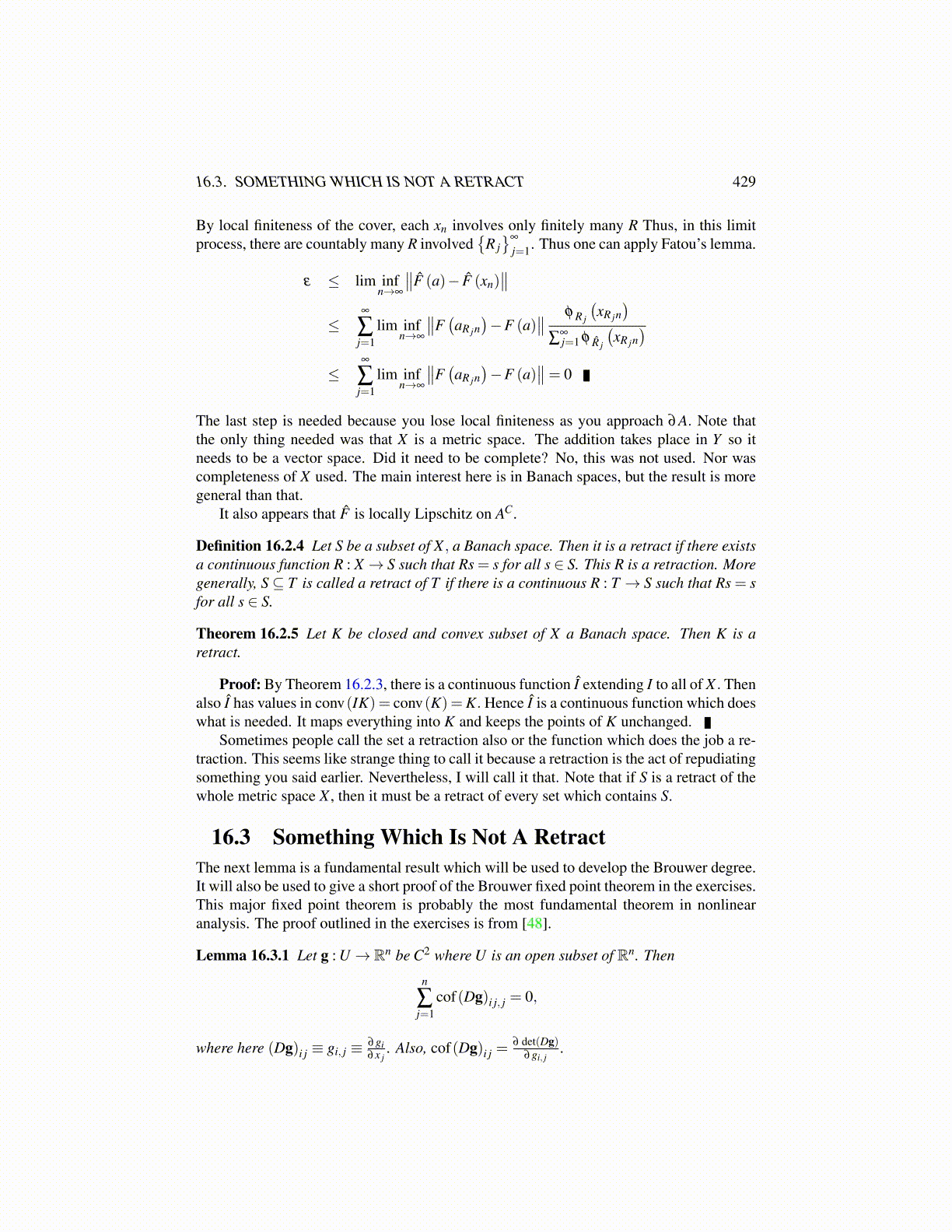
16.3. SOMETHING WHICH IS NOT A RETRACT 429
By local finiteness of the cover, each xn involves only finitely many R Thus, in this limitprocess, there are countably many R involved
{R j}∞
j=1. Thus one can apply Fatou’s lemma.
ε ≤ lim infn→∞
∥∥F̂ (a)− F̂ (xn)∥∥
≤∞
∑j=1
lim infn→∞
∥∥F(aR jn
)−F (a)
∥∥ φ R j
(xR jn
)∑
∞j=1 φ R̂ j
(xR jn
)≤
∞
∑j=1
lim infn→∞
∥∥F(aR jn
)−F (a)
∥∥= 0
The last step is needed because you lose local finiteness as you approach ∂A. Note thatthe only thing needed was that X is a metric space. The addition takes place in Y so itneeds to be a vector space. Did it need to be complete? No, this was not used. Nor wascompleteness of X used. The main interest here is in Banach spaces, but the result is moregeneral than that.
It also appears that F̂ is locally Lipschitz on AC.
Definition 16.2.4 Let S be a subset of X , a Banach space. Then it is a retract if there existsa continuous function R : X → S such that Rs = s for all s ∈ S. This R is a retraction. Moregenerally, S⊆ T is called a retract of T if there is a continuous R : T → S such that Rs = sfor all s ∈ S.
Theorem 16.2.5 Let K be closed and convex subset of X a Banach space. Then K is aretract.
Proof: By Theorem 16.2.3, there is a continuous function Î extending I to all of X . Thenalso Î has values in conv(IK) = conv(K) =K. Hence Î is a continuous function which doeswhat is needed. It maps everything into K and keeps the points of K unchanged.
Sometimes people call the set a retraction also or the function which does the job a re-traction. This seems like strange thing to call it because a retraction is the act of repudiatingsomething you said earlier. Nevertheless, I will call it that. Note that if S is a retract of thewhole metric space X , then it must be a retract of every set which contains S.
16.3 Something Which Is Not A RetractThe next lemma is a fundamental result which will be used to develop the Brouwer degree.It will also be used to give a short proof of the Brouwer fixed point theorem in the exercises.This major fixed point theorem is probably the most fundamental theorem in nonlinearanalysis. The proof outlined in the exercises is from [48].
Lemma 16.3.1 Let g : U → Rn be C2 where U is an open subset of Rn. Then
n
∑j=1
cof(Dg)i j, j = 0,
where here (Dg)i j ≡ gi, j ≡ ∂gi∂x j
. Also, cof(Dg)i j =∂ det(Dg)
∂gi, j.